by Howie Wolke
INTRODUCTION
In 2016, legendary ecologist Edward O. Wilson published Half Earth: Our Planet’s Fight for Life. In this remarkable book, Wilson documents the ongoing anthropogenic planet-wide biological meltdown, the greatest extinction event since a meteor crashed into the Gulf of Mexico, about 60 million years ago. As a remedy, Wilson argues for protecting half of the Earth’s terrestrial acreage as inviolate nature reserves.
Flash back to the early 1980s. The original wilderness-focused Earth First! suggested that a fair balance for wilderness and civilization might be 50% for each. It was called “crazy”, “radical”, “unrealistic” and other terms of endearment not fit for print. And in my 1991 book Wilderness on the Rocks, I suggested that 30% of the U.S. be designated wilderness as a short term goal. That was also ridiculed as “unrealistic”.
Today, the “Nature Needs Half” coalition is promoting Wilson’s vision, and the “Thirty by Thirty” movement is gaining traction in the mainstream political discourse. Its goal is to protect 30% of the Earth’s landscape in nature reserves by the year 2030. The 30/30 goal is now considered by many to be attainable. And it is gratifying to see land protection efforts of this magnitude inch their way into the public discourse. The 30/30 goal does not mean that 30% of the land would be designated wilderness in the United States. Wilderness is our highest level of protection and it will be an important part of the equation. But other protective strategies, which also protect natural habitats for wildlife, biodiversity and other ecosystem values, will also be essential, especially for lands that lack wilderness characteristics. The purpose of this essay is to advance the discussion on how to effectively protect nearly a third of the U.S. landscape, including but not limited to designated wilderness.
DISCUSSION
30/30 would be a great start toward Wilson’s more thorough vision of Half Earth. But in my view, it is just that: a great start. Increasing numbers of scientists have concluded that 30/30 is the minimum starting point for conserving native biodiversity. The International Union for the Conservation of Nature (IUCN) has endorsed 30/30, along with a growing list of American and international conservation groups.
President Joe Biden has endorsed 30/30, as has California Governor Gavin Newsom. There is also plenty of public support for protecting wildlands. According to a poll by the Center for American Progress, about 86% of Americans support the 30/30 concept, including 76% of polled Republicans. Clearly, when it comes to land protection, there is a huge disconnect between Republican politicians and the rank and file.
The extinction crisis is driven by habitat destruction and fragmentation, pollution, poaching, the proliferation of exotic weed species plus climate change. The meltdown is fueled by a growing human population that continues to expand unabated like a spreading cancer into remaining natural habitats around the globe, displacing native life and ecosystems. Some ecologists estimate that half of the estimated 10 million species that we share the planet with could be extinct or plummeting toward the eternal abyss by late this century. Thus, the need to protect land and water becomes more acute. Conservation biologists assert that we need to protect big interconnected landscapes as nature reserves.
Of course, protecting wild nature isn’t just about countering the biological meltdown. Wilderness is the primary repository of 3.5 billion years of organic evolution on this blue green spinning ball of life that we call Earth. Wilderness is the fundamental environment that shaped all known life, including humans, though many deny this primal connection. That’s why new wilderness designations and good wilderness stewardship should top the 30/30 agenda, while recognizing that other kinds of land protections will also be essential.
I also believe that wild nature has intrinsic value, something that’s worthwhile for its own sake, independent of the multitude of benefits it provides humans. That’s my primary motive as a conservationist. Many of us simply love all that is wild—and we know deep in our primate bones that Aldo Leopold said it best: “A thing is right when it tends to preserve the integrity, stability and beauty of the biotic community. It is wrong when it tends otherwise.”
“Untrammeled”, “primeval”, “natural”, and “where the imprint of man’s (sic) work is substantially unnoticeable” are phrases used in the 1964 Wilderness Act to define designated wilderness (I believe the authors of the Wilderness Act used the term “natural” to describe a landscape dominated by native plants and animals. Thus I do not consider croplands, livestock pastures and monocultures of exotic weeds to be “natural”). Today's National Wilderness Preservation System encompasses about 111 million acres, or about 4% of the U.S. landscape. Yet about half of that acreage is in Arctic and Subarctic Alaska, whereas only about 2.7% of the lower 48 states is designated Wilderness.
Because of this geographic disparity, for the 30/30 campaign, let’s view these two geographies through distinct lenses, so that at least 30% of the lower 48 is protected. And, let’s set the 2030 goal for Alaska at 50%. In that vast realm that’s still mostly wild, achieving Wilson’s goal would be easy, at least from a landscape viewpoint. For starters in Alaska, the Naval Petroleum Reserve (keep that oil in the ground, where it won’t harm the atmosphere!), the entire Alaska Range east of Denali, and most of the Chugach and Tongass national forests should all be protected as designated wilderness.
Where do we find 30%—or 50%—of our landscape to protect? Start with the existing National Wilderness Preservation System (2.7% of the lower 48 states). Then, add protections for all roadless areas, wilderness study areas, and backcountry areas administered by our four federal land management agencies. Based upon research I did back in the 1980s, I estimate that roughly 12-15% of the land area of the lower 48 states is in a wilderness or near-wilderness condition. This includes over a hundred million additional acres—according to agency inventories—of wilderness or semi-wilderness quality lands in the lower 48 states, in national forest and BLM-administered roadless areas and Wilderness Study Areas alone! We can also designate many new national parks, monuments and wildlife refuges.
States can also add to the protected acreage by adding parks and wildlife preserves. A few states already maintain significant protected wildland acreages: New York’s Adirondack Forest Preserve, for example. In the private domain, large holdings with conservation easements and protected holdings of land trusts and conservancies might also qualify as “protected” lands under 30/30. We can also use additional tax incentives for conservation easements plus the Land and Water Conservation fund to acquire additional conservation lands.
In addition, we can restore the wilds! There is vast potential for wildland restoration (“re-wilding”) across tens of millions of acres of the public domain. We can even restore wilderness. The Wilderness Act’s authors never intended for the definition of wilderness to preclude lands that were less than pristine. Note that according to the Wilderness Act, the imprint of humanity’s work must simply be “substantially unnoticeable”. In fact, Congress can and has designated wilderness for lands that had been previously roaded, clearcut and otherwise developed. Once designated, under the Wilderness Act, agencies must manage such lands as wilderness, letting nature re-wild the landscape. In fact, most wilderness areas in the eastern U.S. have been re-wilding themselves, for the most part just by being left alone.
Yet agency bureaucrats routinely violate the Wilderness Act by allowing illegal developments in designated wilderness. And Congress too often enacts wilderness bills with special provisions (for example allowing for off-road vehicular use in wilderness for ranchers) which weaken wilderness protections. Nonetheless, in this imperfect world, designated wilderness remains our highest level of land protection in the U.S., and should be a big component of the 30/30 movement. Thus, as we move toward 30/30, keeping designated wilderness areas truly wild (the primary mission of Wilderness Watch) will assume even more importance!
I mentioned entrenched bureaucrats. Here’s an example: According to Custer-Gallatin National Forest Supervisor Mary Erickson, “I view all public lands as being protected.” It is hard to believe, I know, but yes, I heard her say that. Thus, in her worldview, giant eroding weed-infested clearcuts, roads gouged across 45-degree slopes (including a 400,000+ mile road network on national forest lands alone!), open- pit mines, oil fields, ORV sacrifice areas, heavily fenced livestock pastures with devastated riparian zones, exotic weed monocultures, dams, pipelines, power corridors, ski areas, summer homes and more constitute the fabric of “protected” public lands. We must guard against bureaucrats who would water down the meaning of “protected” land. Otherwise, 30/30 will be used to simply rubber stamp existing agency mismanagement.
SPECIFICS
Which brings us to the central question of both the Nature Needs Half and the 30/30 movements: “What constitutes ‘protected’ land?” We need definitive standards in addition to those in the Wilderness Act, which will assure that all of the 30% is really protected.
For example, the U.S. Geological Survey defines 4 levels of land protection called “Gap Status”. Status level 1 represents the strictest level of protection and Status 4 the least. Without detailing each of these levels, I would argue that even Gap Status 1 is weak, and that Status levels 2 through 4 represent little more than business as usual for public lands under typical agency multiple (ab)use management. For the record, Gap Status 1 is defined as
An area having permanent protection from conversion of natural land cover and a mandated management plan in operation to maintain a natural state within which disturbance events ( of a natural type, frequency, intensity and legacy) are allowed to proceed without interference or are mimicked through management.
Here's another, slightly better definition of protected land utilized by the International Union for the Conservation of Nature (IUCN) and the United Nations Environment Programme (UNEP):
A protected area is a clearly defined geographical space, recognized, dedicated and managed, through legal or other effective means, to achieve long term conservation of nature with associated ecosystem services and cultural values.
I propose that we combine the best aspects of the above two definitions, and then further strengthen the definition with a few caveats. My proposed definition of protected land:
A clearly defined geographical area having permanent protection through legal or legislated or other effective means, to achieve long term conservation of nature with associated ecosystem services and cultural values. Natural conditions are maintained and the conversion of natural native land cover is precluded. Natural disturbance events and processes such as wildfire, flood and predation, are allowed and encouraged.
I believe this to be a workable definition, with the following caveats:
- Mechanized Travel must be restricted to designated roads within reserves.
- New road construction is prohibited.
- Resource extraction such as mining, oil drilling and commercial logging are prohibited.
- Lands that have been impacted in the past, including logged over lands and lands with limited or primitive road networks, can be included if a management plan is in place to restore and maintain wild and natural conditions (re-wilding).
- In some regions of the world, existing subsistence hunting/gathering/fishing rights—preferably via traditional primitive means—might continue, depending upon the circumstance. However, this question probably merits more of a discussion than is practical in this brief overview.
Here are some examples of lands that could constitute our protected 30%:
- The National Wilderness Preservation System
- National forest and BLM Roadless areas and Wilderness Study Areas
- Protected state wildlands such as those in New York’s Adirondack Forest Preserve
- National Parks
- National Monuments
- National Wildlife Refuges
- Forest Service and BLM-administered multiple use lands in which a plan is in place to restore wild and natural conditions (re-wilding).
- Private conservation lands in which natural conditions are maintained via conservation easement or other legal protection(s)
- About 24 million acres of lands included in the Northern Rockies Ecosystem Protection Act, which designates new wilderness areas, biological corridors, and wildland recovery areas in the U.S. Northern Rockies.
- Protected public and private lands in Montana’s growing American Prairie Reserve
- Existing and potential biological corridors
Here are a few examples of lands that should NOT be included in the “protection” category:
- Lands that are intensively grazed and managed primarily for livestock production
- Croplands or manicured urban parks not characterized by native vegetation, even if they are maintained as “open space” by conservation easements
- Typical Forest Service- and BLM-administered “multiple use lands” that are managed for timber production, livestock, minerals, and mechanized transportation. As noted above, such lands can be moved into “protected” status if a re-wilding plan replaces “multiple abuse”.
And finally, the first step to 30/30 should be a National Wildlands Inventory conducted by an independent panel of scientists to identify both public and privately-owned wildlands that could qualify for some level of protected status under a 30/30 plan. Part of the inventory—and ultimately part of the 30/30 plan—should specifically identify the country’s major eco-regions, to assure that each ecoregion has at least one protected area that is large enough (and/or functionally interconnected with other nearby wild areas) to support most of the native keystone species—large carnivores, for example —for that ecosystem.
SUMMARY
Wildland conservation has an opportunity to move forward with a bold plan to protect wilderness and other wild habitats on nearly one third of our landscape. Conservation groups can support the 30/30 movement as a minimum starting point, looking ahead to E.O. Wilson’s Half Earth vision as the long term goal.
Achieving 30/30 will not be easy. It faces a hostile gauntlet of the usual bad actors: entrenched bureaucrats, myopic and corrupt elected officials plus the industry lobbies that work to thwart most conservation initiatives. Not to mention the rapidly expanding army of mechanized recreationists, including mountain bike organizations. Yet the history of conservation proves that commitment and determination can overcome enormous political obstacles. Today’s global ecological crisis demands that we dramatically increase land and water protections. This includes pushing for maximum protected acreage for wilderness quality lands and other areas that remain relatively natural and wild.
Like cockroaches, humans can adapt to and even thrive in nearly every artificial environment imaginable. Like Mumbai, for example. Or Houston. Or the expansive monocultural wastelands of Kansas. But is cockroach habitat and vast impoverished human-scapes the world that we wish to pass on? The least we can do for future generations of both human and non-human life is to approach wildland conservation as though the survival of life as we know it on Earth depends upon it—which in fact, it does. Enacting a strong 30/30 plan would be a great start.
------------------
Howie Wolke is a long-time wilderness proponent. He has been a board member for Wilderness Watch on and off for over two decades, including two terms as President. He is a retired wilderness backpacking and canoeing guide/outfitter who now enjoys wilderness adventure without having to be responsible for others. He and his wife, Marilyn Olsen, and their dog Rio live in the foothills of the Gallatin Range, just north of Yellowstone National Park in southern Montana.
Author’s note: Thanks go to Marilyn Olsen and Wilderness Watch board member René Voss for their suggested edits, many of which have been incorporated into the final version. However, any errors and anything the reader might deem to be offensive are entirely my responsibility.
 I arrived at the Corn Creek trailhead about 4 p.m. in the afternoon. The sun was still hot, and the river canyon felt like an oven, particularly for May. After a few hours of hiking along the trail, I reached Horse Creek, a small tributary of the Salmon River. The creek was loud and brimming bank-to-bank with spring runoff. I decided to cross the creek using the foot-bridge—it was the wrong time of the year to wade into the water and attempt a stream crossing!
I arrived at the Corn Creek trailhead about 4 p.m. in the afternoon. The sun was still hot, and the river canyon felt like an oven, particularly for May. After a few hours of hiking along the trail, I reached Horse Creek, a small tributary of the Salmon River. The creek was loud and brimming bank-to-bank with spring runoff. I decided to cross the creek using the foot-bridge—it was the wrong time of the year to wade into the water and attempt a stream crossing!
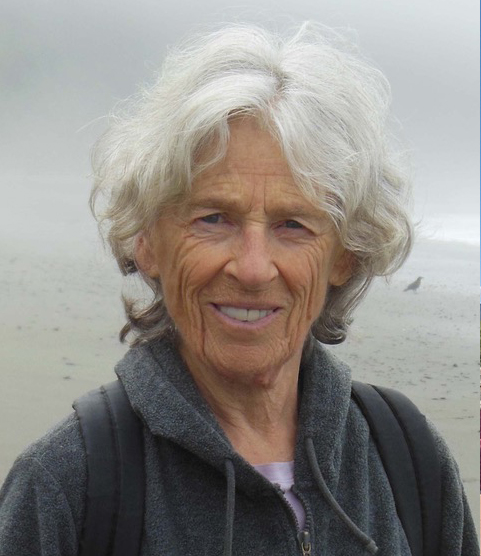 Wind River Range, Bridger Wilderness, Pinedale, Wyoming:
Wind River Range, Bridger Wilderness, Pinedale, Wyoming: 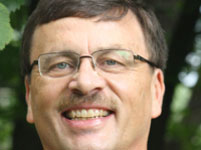 by Kevin Proescholdt
by Kevin Proescholdt
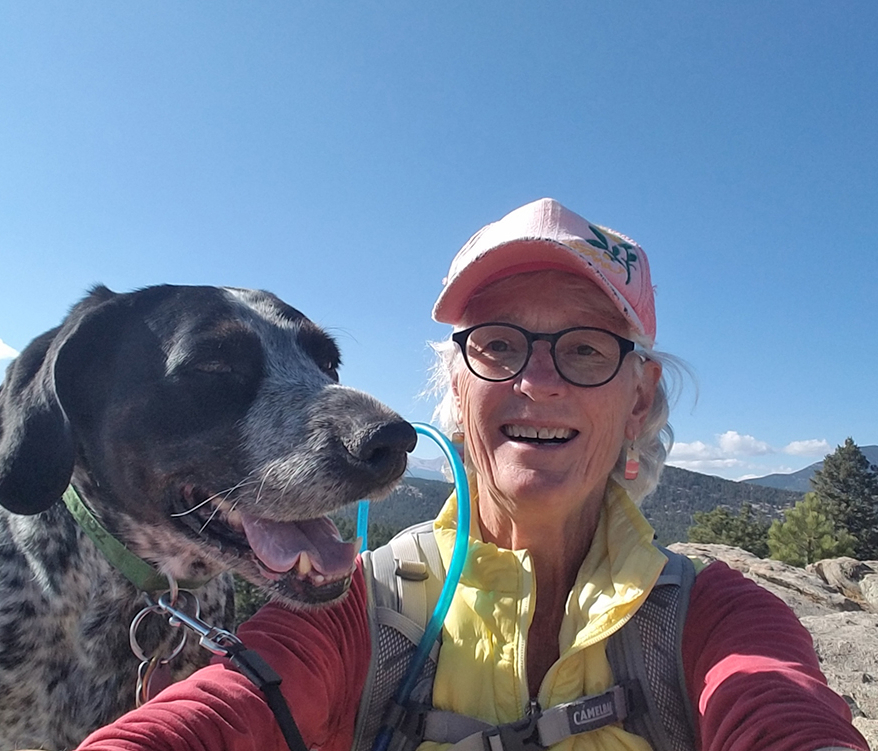 A long wait – almost 50 years – to learn
A long wait – almost 50 years – to learn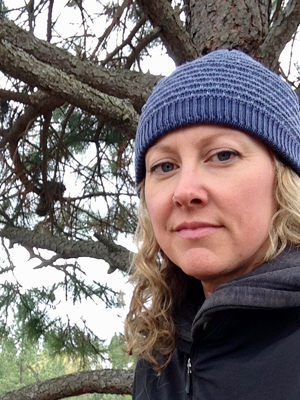
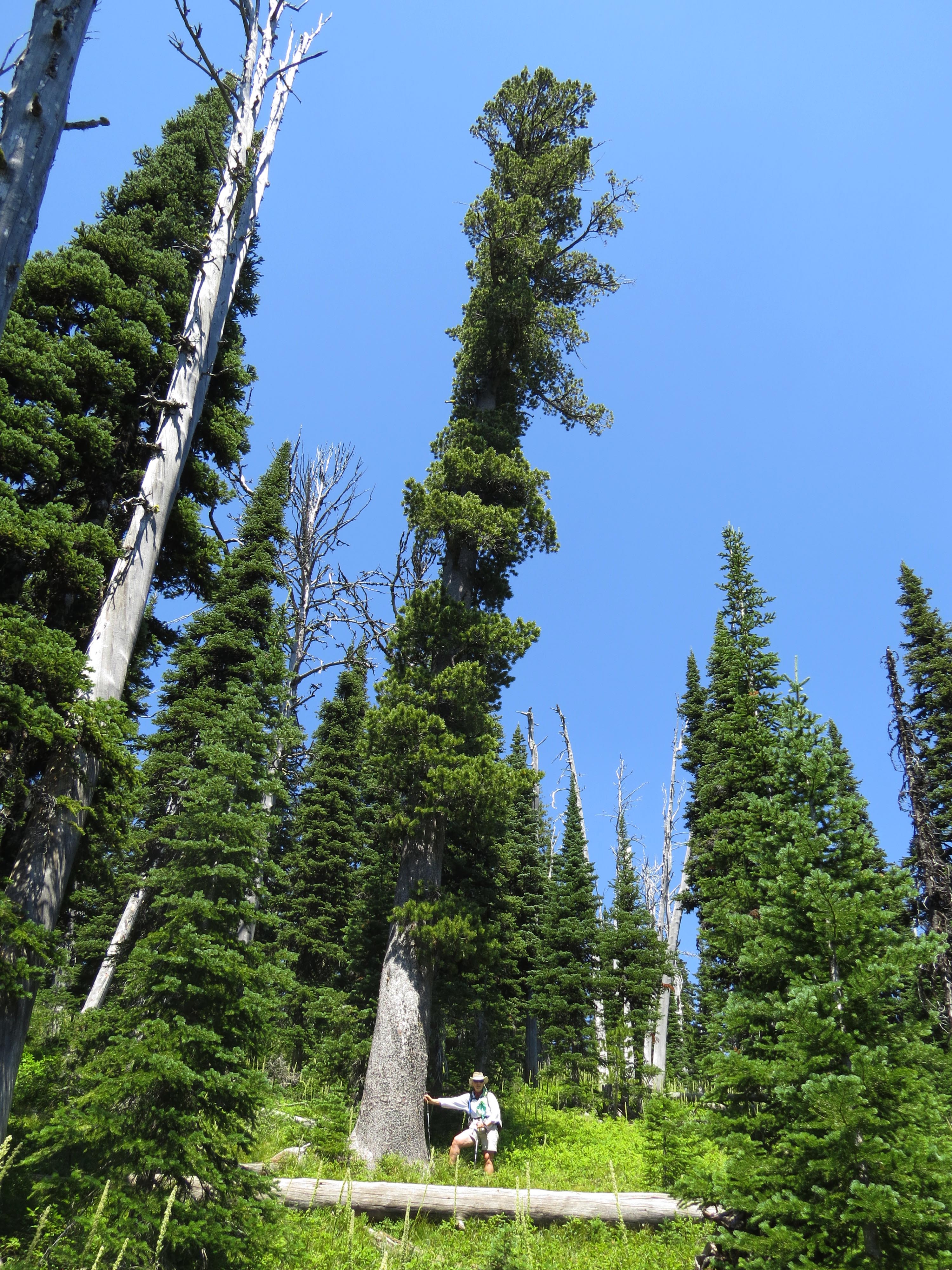
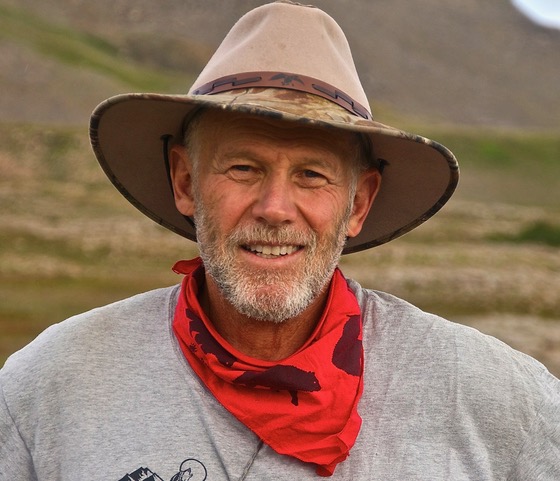 In late October, Marilyn and I headed south for a 226 mile 21-day float trip down the Grand Canyon of the Colorado River. There were four of us, in two rafts. For most of the 20,000 or so folks who annually float the Colorado, the scenery and numerous challenging rapids are big attractions. But for Marilyn and me, the big draw was the vast desert wilderness that the river punctuates. Although I hadn’t rowed challenging whitewater in nearly two decades, we all made it through the rapids upright, though I had a few close calls.
In late October, Marilyn and I headed south for a 226 mile 21-day float trip down the Grand Canyon of the Colorado River. There were four of us, in two rafts. For most of the 20,000 or so folks who annually float the Colorado, the scenery and numerous challenging rapids are big attractions. But for Marilyn and me, the big draw was the vast desert wilderness that the river punctuates. Although I hadn’t rowed challenging whitewater in nearly two decades, we all made it through the rapids upright, though I had a few close calls.
 There is an art of conducting oneself in the lower regions by the memory of what one saw higher up. —René Daumal, Mount Analogue
There is an art of conducting oneself in the lower regions by the memory of what one saw higher up. —René Daumal, Mount Analogue For many years, dating back even to my childhood, I have dreamed of spending time in the Alaskan wilderness. In August, 2019 this dream became a reality when my middle daughter and I spent 9 days rafting the Kongakut River in the Arctic National Wildlife Refuge.
For many years, dating back even to my childhood, I have dreamed of spending time in the Alaskan wilderness. In August, 2019 this dream became a reality when my middle daughter and I spent 9 days rafting the Kongakut River in the Arctic National Wildlife Refuge.

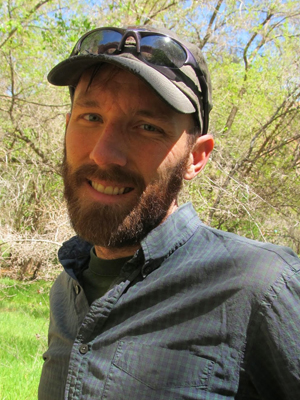

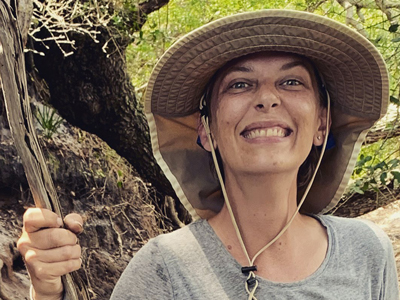 Cumberland Island Wilderness is part of the Cumberland Island National Seashore in southern Georgia, administered by the National Park Service (NPS). It was previously sanctioned as a UN Biosphere Reserve, and is located just miles from Kings Bay Naval Base and also nuclear warhead storage.
Cumberland Island Wilderness is part of the Cumberland Island National Seashore in southern Georgia, administered by the National Park Service (NPS). It was previously sanctioned as a UN Biosphere Reserve, and is located just miles from Kings Bay Naval Base and also nuclear warhead storage. So now I know why people came up with the idea of aerial spraying DDT to kill pesky bugs ... like the thousands of mosquitoes that attacked me over the summer solstice in the Emigrant Wilderness. Relentless beasts!
So now I know why people came up with the idea of aerial spraying DDT to kill pesky bugs ... like the thousands of mosquitoes that attacked me over the summer solstice in the Emigrant Wilderness. Relentless beasts!